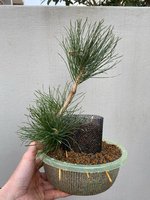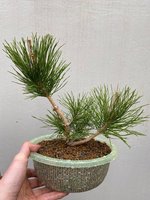SeanS
Omono
- Messages
- 1,240
- Reaction score
- 3,482
- USDA Zone
- 9b
I did, but what I see is a sacrificial leader with the side branches cut off at each whorl, but many apical buds growing at the top. I already do this on my young JBPs, but only because the side shoots were shading out the lower growth so I cut off the side shoots mid summer last season. What I’d like to know is when should the side shoots be cut off? Telperion seems to leave all the top shoots growing, but then removed them at some point. When? Only at the start of the next season? Which would mean they were all allowed to grow the previous season?Did you look at the picture I posted?
currenty
I have 4-6 candles extending at the top of my young JPB sacrifice leaders. Do I let them all grow this spring and only reduce them later one if they shade out the bottom growth or possibly only at the end



